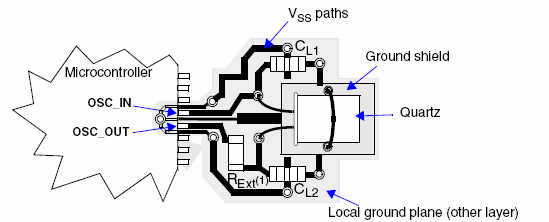Why is it usually necessary to add two resonant capacitors CL1 and CL2?
In passive crystal oscillatior circuits, we often add resonant capacitors on both sides of the passive crystal,
Also called ground capacitor, external capacitor or matching capacitor .The reasons for this are explained below:

The frequency marked on the passive crystal shell is generally the nominal frequency marked in the crystal data sheet,
neither the series resonant frequency nor the parallel resonant frequency,
this frequency is coming from be measured when the load capacitor is connected externally,
the value of which is bounded between the series resonant frequency and the parallel resonant frequency.
Passive crystal standard capacitance
The nominal frequency of a passive crystal has a "load capacitance" condition when tested.
Only this condition is met when the crystal is in operation will its oscillation frequency be consistent with the nominal frequency
In other words, only when a suitable resonant capacitor is connected can a passive crystal meet its starting requirements
and work properly.
The load capacitance CL is the terminal capacitance connected to the crystal.
the CL value depends on the external capacitors CL1 , CL2 and the stray capacitance (Cs) on the circuit board.
the CL value is given by the manufacturer of the crystal.
Ensuring the accuracy of the oscillation frequency depends mainly on the load capacitance of the oscillation
circuit being the same as the given capacitance value, and ensuring the stability of the oscillation frequency depends mainly on the load capacitance remaining constant.
External capacitors CL1 and CL2 can be used to adjust the CL and reach the crystal's standard value .The expression for CL is as follows:

